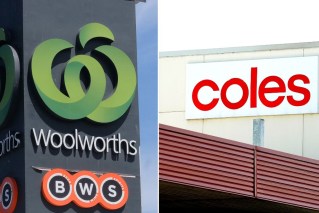Jobs surprise a relief for government
A surprise fall in unemployment will offer some comfort to the federal government as it starts the year facing crumbling commodity prices and shaky consumer confidence.
New figures show unemployment fell to 6.1 per cent in December, according to the Australian Bureau of Statistics, down from 6.3 per cent the previous month after 37,000 jobs were added across the country.
With the federal government watching its revenue forecasts ravaged by plummeting world commodity prices – on top of other distractions like another costly backdown on its contentious Medicare reforms – the unexpected drop in the jobless rate was welcome news.
• Shock jobless figures shift debate
• Government abandons cuts to GP Medicare rebate
Federal employment minister Eric Abetz said the rise was further evidence that the jobs market was strengthening towards the end of 2014.
“Employment is growing, unemployment is coming down and more people are actively looking for work,” Senator Abetz said.

Eric Abetz says the job market is strengthening.
Senator Abetz said jobs growth in 2014 averaged 17,800 a month – well above the 5000 a month of 2013.
Queensland experienced the biggest fall in its unemployment rate – down to 6.1 per cent from 6.8 per cent – courtesy of a gain of 22,500 jobs in December.
Queensland Treasurer Tim Nicholls claimed credit for the rise, saying “these jobs just don’t happen by accident – they happen because of a government that is doing the right thing”.
The December rise did come after a year of stagnant employment growth, however, and Mr Nicholls accepted that the trend rate of 6.6 per cent was still too high.
The total number of people with jobs rose 37,400 to 11.679 million in December – defying economist expectations of a relatively flat performance.
Full-time employment rose by 41,600 to 8.105 million in December and part-time employment was down 4100 to 3.574 million.
The new jobless figures coincided with a reversal of the ANZ Bank’s forecast on interest rate movements, with the bank tipping the Reserve Bank of Australia would now cut the official rate from 2.5 per cent to 2 per cent in the first half of 2015 instead of lifting them later in the year.
Other economists interpreted the jobs numbers as a sign the central bank would remain on the sidelines during the year, with Citi’s Josh Williamson saying: “We continue to hold our view that the RBA will be sidelined for all of 2015 and return to a hiking bias in early 2016”.

Low fuel prices are yet to translate into more spending.
Falling petrol prices have also reduced inflationary pressures in Australia – furthering expectations that the RBA won’t need to hike rates any time soon.
AMP chief economist Shane Oliver says the fall in global oil prices has put an average $14 a week back into family budgets.
But while Australians are enjoying the lowest fuel prices in nearly five years, it’s yet to translate into more spending.
Consumer confidence rose just 0.3 per cent last week, according to ANZ/Roy Morgan figures out on Tuesday, suggesting consumers are pocketing the savings from cheaper petrol rather than spending it.
“Subdued levels of confidence, combined with soft retail sales in November and mixed anecdotes about December sales, suggest that households may be saving rather than spending the real income boost from lower petrol prices,” ANZ chief economist Warren Hogan said.
One group of consumers not enjoying the full benefit of cheap fuel are regional drivers.
The Australian Competition and Consumer Commission announced a new probe into country petrol prices on Thursday that will examine, among other issues, why fuel was 17.6 cents a litre dearer on average for country motorists than city drivers by December.
Monthly reports on what factors are influencing petrol prices will be released by the regulator, with ACCC chairman Rod Simms saying he needed to get to the bottom of “inexplicable” prices.

Japanese cars will be cheaper in Australia.
Also on Thursday Australia started operating its free trade deal with Japan.
The Japan-Australia Economic Partnership Agreement – signed in July 2014 – will make Japanese cars and other imports cheaper and improve access to Japan for Australian beef, wine, seafood, fruit and vegetable exporters.
The Australian Food and Grocery Council welcomed the start of the agreement as “a vital step in cementing Australia’s position as a premium food exporter”.
The agreement will lower tariffs on Australian food exports in two rounds – one on January 15 and a second on April 1.
Australian Industry Group chief executive Innes Willox noted that while tariff cuts on Japanese vehicles and consumer goods would benefit Australian shoppers, “some Australian industries, including some domestic manufacturers, will face increased competition and the pressures that flow from that”.
-AAP








